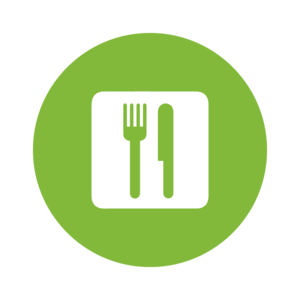
The general principle for running a profitable business is simple. Generate more revenue than you pay out in expenses. This can be accomplished by charging the correct amount for the goods or services your business offers.
However, if you own a restaurant, you know how difficult setting prices can be. Your goal is to provide customers with delicious food and a great experience but you also need to make sure every item on your menu helps recoup your operating costs and then some.
Setting just the right menu prices boils down to having a thorough grasp of your costs and understanding how customers perceive your restaurant.
Food Costs
Food costs are the total costs of each ingredient used to prepare a menu item. It includes everything from the main ingredient to minor items like seasoning, garnishes, and cooking oil.
To calculate food costs, you need to know the exact cost for each ingredient and follow a consistent recipe each time you prepare a dish. However, some food costs do fluctuate due to seasonality, availability, or other factors. Many restaurants use the highest possible ingredient cost when determining their prices or rotate menu items with seasons.
Once you have a solid understanding of each menu item’s total cost, you can start to work out the correct amount to charge. Food costs should be about 30-35 percent of your sales, depending on the type of restaurant you operate.
Other costs that factor into menu prices
Restaurants also incur a number of other costs that need to be covered by menu prices. Here are some common examples:
-
Labor costs – You need to account for the wages and benefits you pay your employees to prepare food, serve customers, and help operate your restaurant.
-
Preparation costs – Not all menu items take the same amount of time and effort. The ones that take more work merit a higher price.
-
Overhead expenses – Restaurants have a lot of overhead costs, such as rent, utilities, equipment, maintenance, marketing, and much more.
There will likely be other costs that are unique to your restaurant you’ll need to take into account. Just be sure you have insight into all your restaurant expenses, so nothing goes unaccounted for.
Determining your menu prices
Once you have all your costs worked out, you can finally set your menu prices.They’ll need to cover all your restaurant’s costs and provide you with a profit. But you’re likely asking yourself how much of a profit is reasonable? You of course want to make as much money as possible but you don’t want to be labeled as an overpriced restaurant. Here are few factors to take into consideration:
-
What type of restaurant do you operate? – People expect a meal at a fine dining restaurant to be expensive and look for more value when eating at a fast-casual restaurant. Be sure that your menu prices align with your customer’s expectations.
-
What do your competitors charge? – Go around your community and see what similar restaurants are charging. It’s also an opportunity to learn what you can do better than your competitors so you can develop a loyal customer base.
-
What else makes your restaurant appealing? – Do you use local and organic ingredients? Are you located next to a famous landmark? Is there a beautiful view from your dining room? Is your restaurant historic or well-known? These small advantages that help attract customers allow you to have slightly higher menu prices.
Setting menu prices is a delicate balance and requires deep thought and cost analysis. But it’s an exercise that will set your restaurant up for long-term success so be sure to give your menu pricing the attention it deserves.
BookKeeping Express (BKE) can manage your restaurant’s books and give you insight into your expenses, revenue, and overall financial performance. Find out why so many restaurants love working with BKE.
